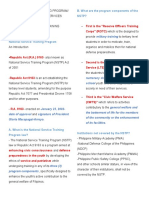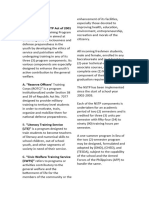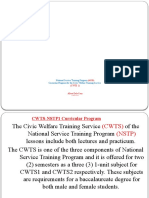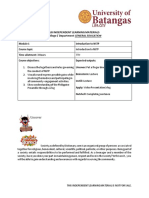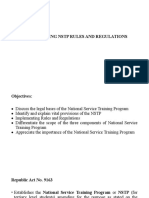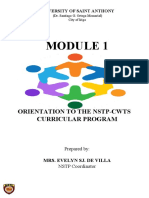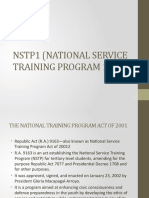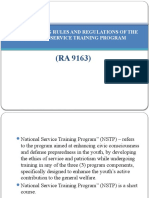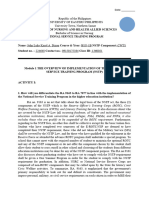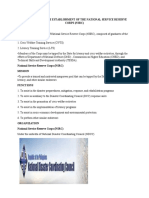0% found this document useful (0 votes)
5 views17 pagesModule 1 Course Orientation
The National Service Training Program (NSTP) was established by Republic Act 9163 to promote civic consciousness, nationalism, and youth involvement in public affairs among tertiary students. It consists of three components: Civic Welfare Training Service (CWTS), Literacy Training Service (LTS), and Reserve Officers' Training Corps (ROTC), each aimed at enhancing the students' contributions to society. Students must complete two semesters of NSTP as part of their graduation requirements, and various exemptions apply.
Uploaded by
Jadelle MontecilloCopyright
© © All Rights Reserved
We take content rights seriously. If you suspect this is your content, claim it here.
Available Formats
Download as PDF, TXT or read online on Scribd
0% found this document useful (0 votes)
5 views17 pagesModule 1 Course Orientation
The National Service Training Program (NSTP) was established by Republic Act 9163 to promote civic consciousness, nationalism, and youth involvement in public affairs among tertiary students. It consists of three components: Civic Welfare Training Service (CWTS), Literacy Training Service (LTS), and Reserve Officers' Training Corps (ROTC), each aimed at enhancing the students' contributions to society. Students must complete two semesters of NSTP as part of their graduation requirements, and various exemptions apply.
Uploaded by
Jadelle MontecilloCopyright
© © All Rights Reserved
We take content rights seriously. If you suspect this is your content, claim it here.
Available Formats
Download as PDF, TXT or read online on Scribd
/ 17




